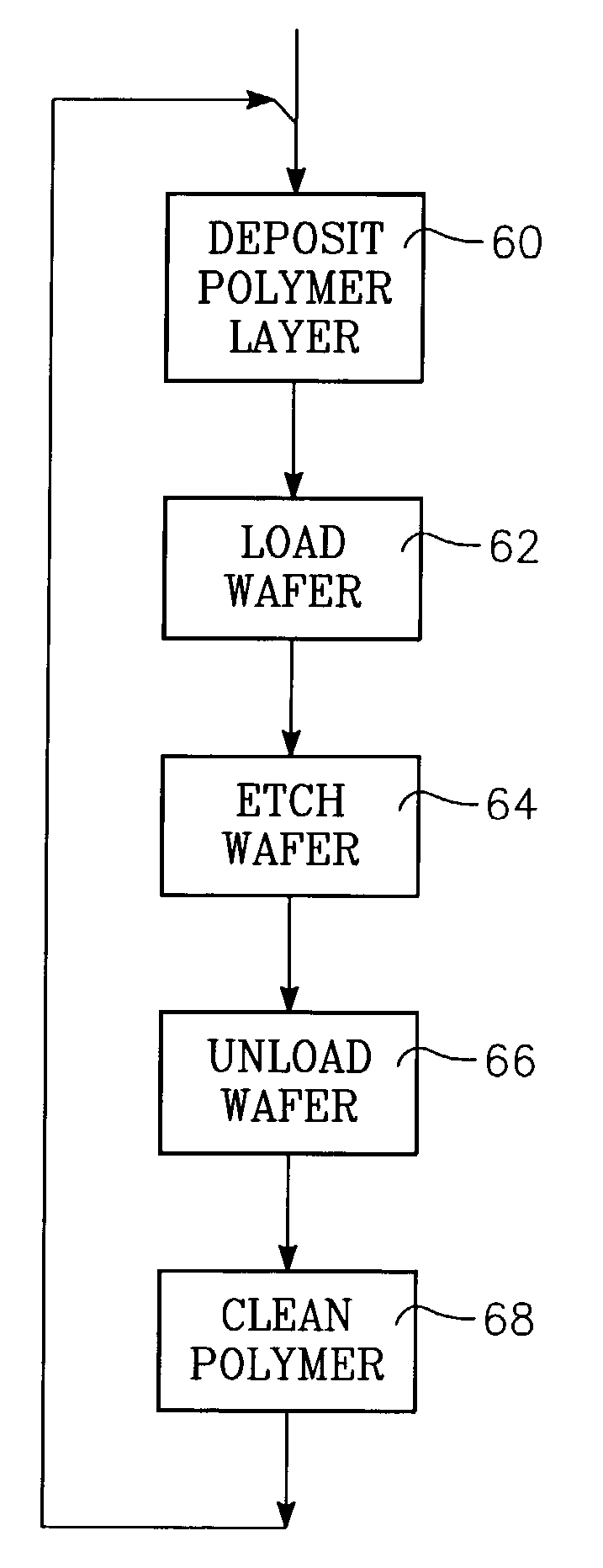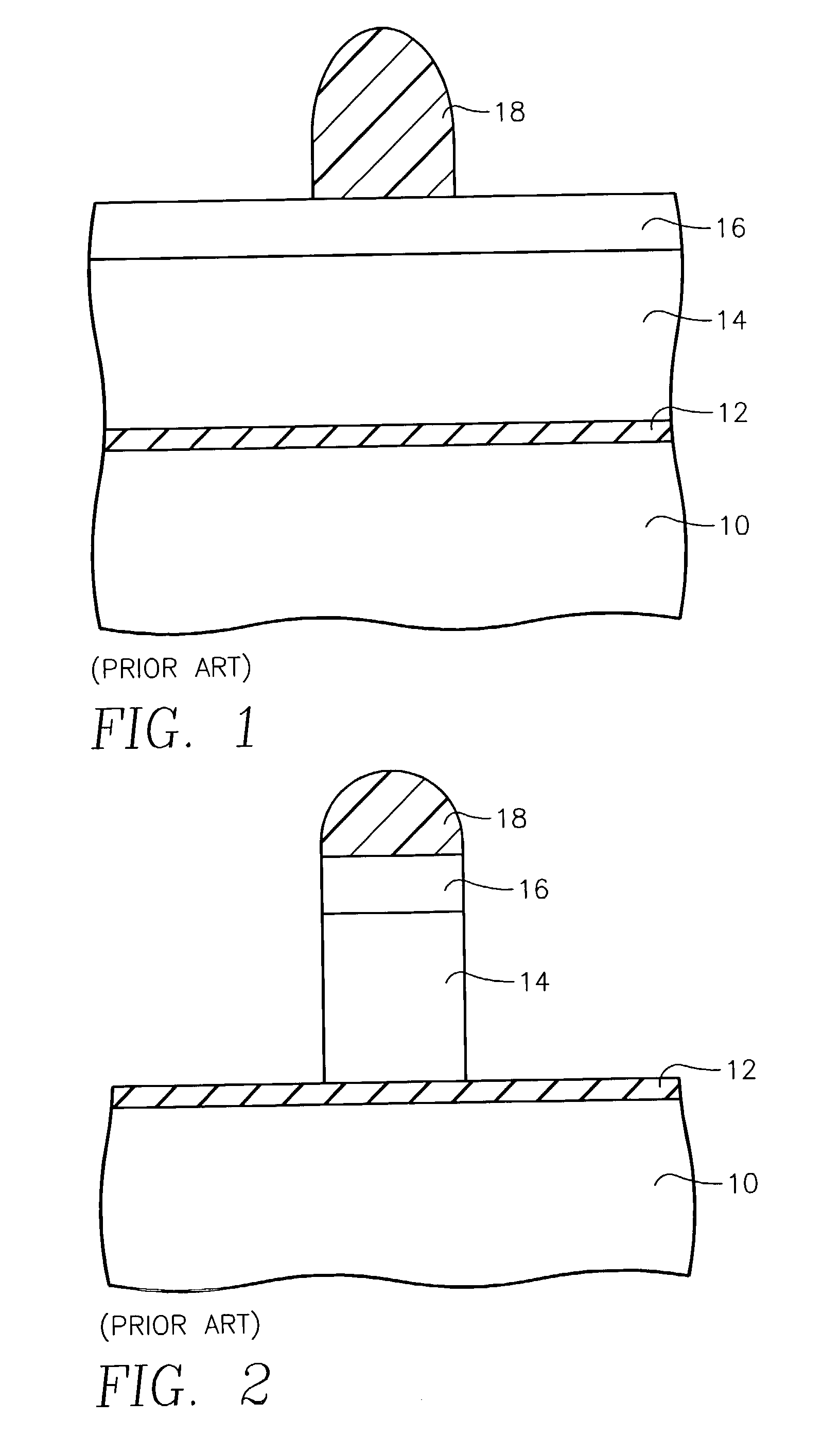Controlled polymerization on plasma reactor wall
a plasma reactor and polymerization technology, applied in the field of semiconductor fabrication, can solve the problems of high aluminum level, other defects in the etched silicon, and generalized poor practice of dramatic change of plasma state during etching
- Summary
- Abstract
- Description
- Claims
- Application Information
AI Technical Summary
Problems solved by technology
Method used
Image
Examples
Embodiment Construction
[0017]The variabilities described above in the breakthrough and main etches are believed to arise from relatively uncontrolled polymerization on the chamber sidewalls or its sidewall shields as the polymer is being deposited in the breakthrough etch but removed in the main etch. Whether a chamber sidewall or other chamber part is bare or covered by polymer will affect the plasma chemistry. For example, the presence of the carbonaceous polymer on the sidewall tends to scavenge oxygen from the main etch plasma while a bare chamber wall does not. The etch rate for the polysilicon main etch has been observed to change 10 to 20% when the chamber wall changes from being coated with polymer to being clean.
[0018]If there is more polymer deposited than is removed, that is, positive net polymer deposition, the polymer thickness builds up from one wafer to the next. Positive net polymerization is considered quite disadvantageous because the polymer thickness keeps building up until the polymer...
PUM
| Property | Measurement | Unit |
|---|---|---|
| thickness | aaaaa | aaaaa |
| thick | aaaaa | aaaaa |
| time | aaaaa | aaaaa |
Abstract
Description
Claims
Application Information
 Login to View More
Login to View More - R&D
- Intellectual Property
- Life Sciences
- Materials
- Tech Scout
- Unparalleled Data Quality
- Higher Quality Content
- 60% Fewer Hallucinations
Browse by: Latest US Patents, China's latest patents, Technical Efficacy Thesaurus, Application Domain, Technology Topic, Popular Technical Reports.
© 2025 PatSnap. All rights reserved.Legal|Privacy policy|Modern Slavery Act Transparency Statement|Sitemap|About US| Contact US: help@patsnap.com



